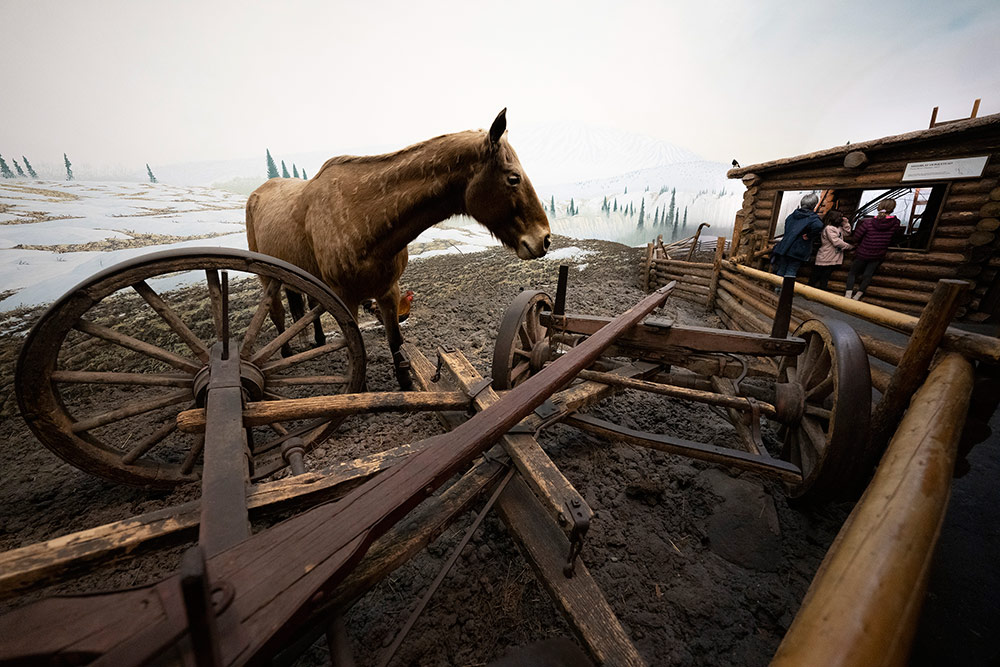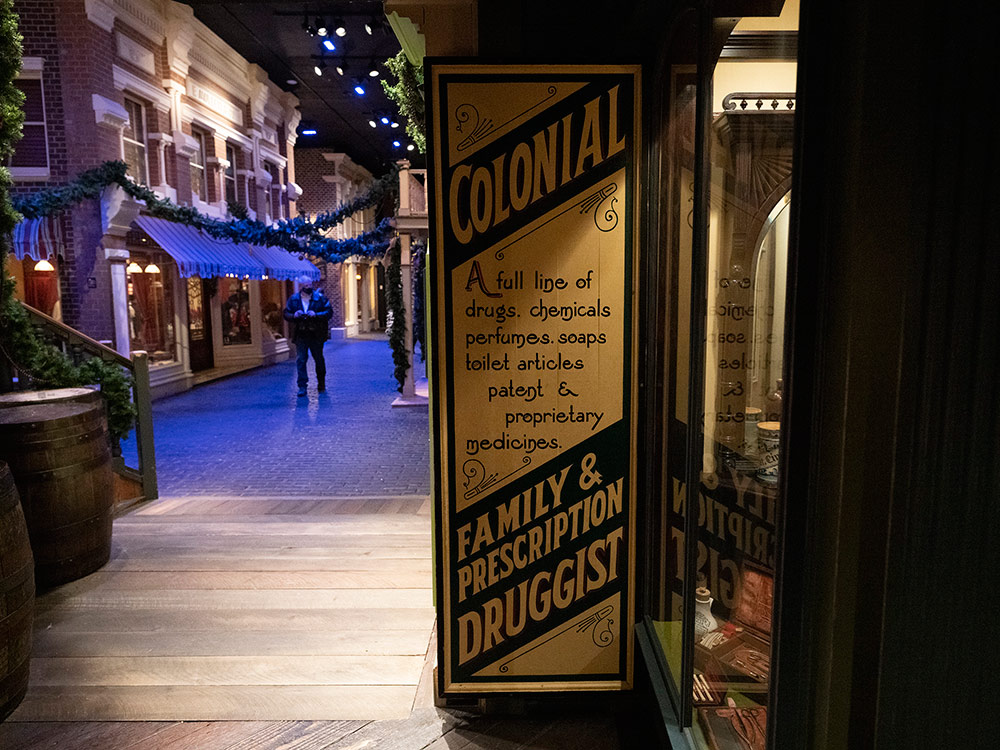There’s a grey mouse that’s inhabited the storefronts and hotel rooms of the Old Town exhibit in the Royal BC Museum for as long as I’ve been alive.
According to my sisters, who roamed the museum’s halls for years before I ever did, the security guards often moved the small stuffed rodent to different spots in the exhibit. One week you might find it behind an ashtray on a dull green card deck in the old saloon; another week it might be nestled between two bags of flour in the second-floor hotel kitchen. The guards seemed to do this for the young children (and curious adults) who would scour the rooms in a desperate search for that small grey mouse.
Through my countless visits to the museum, I never did find the little creature. There were just too many nooks and details in the displays of colonial B.C. for my easily distracted eyes.
Despite my fruitless searches, adventures like these are imprinted into my memories. And like so many other kids who have grown up in Victoria, the exhibits on the museum’s third floor will stay with me forever.
In November, the museum announced the third floor was closing. This floor consisted of two main sections: the First Peoples Gallery and the Becoming BC Gallery. The former exhibit showcased the museum’s collection of Indigenous artifacts, art and interpretive displays. The latter displayed a wide range of rooms depicting the settler experience in B.C., including re-creations of a farm, a fish processing plant, a mine, a trading post, the boat HMS Discovery and of course, Old Town.
The Becoming BC gallery opened in the early 1970s, and it was clear that much of the information was dated. The exhibits were the product of a time when postcolonial theory was not nearly as developed as it is today.
Much of the floor is unapologetically Eurocentric, and it creates a great barrier for any educational institution that wants to tell an accurate story of the history of B.C. Even the Indigenous section of the floor has shown its age, with outdated terms like “Nootka” and “Indian” indicating the time for a re-examination.
The closure also follows a summer of controversy, where an investigation found occurrences of racial discrimination in the museum’s workplace. This scandal led to a slew of reconciliatory measures, the resignation of the museum’s CEO, Jack Lohman, and perhaps accelerated the process of change to the third floor.
A great many questions about this re-examination remain. To what extent will local communities be involved in this new history of the West Coast? Which stories will be told, and which won’t? With the accusations of a racist culture within the museum administration, how much trust will the public give to this new grand project?

I find myself at a strange crossroad when interpreting the closure of such a place. For one, these exhibit halls were cherished places for me. Captain Cook’s ship had me yearning for adventure whenever I boarded, the dark coal mine filled me with intrigue, the salmon packing house made me strongly consider a career in fish processing. This is nostalgia for me at its strongest, and I don’t wish to forget it.
But then today I ask myself what ideas this world reinforces. To what extent is my idea of the history of British Columbia driven by the narrow storytelling of curators from years past?
I believe that one unfortunate side effect of nostalgia is that it creates the mindset that any change will disrupt an imagined equilibrium in one’s memories, and that this equilibrium must be protected at all costs. Never mind the fact that whatever comes next will (hopefully) stand for many years and inspire a whole new generation.
Telling new stories and cherishing a dated past are not mutually exclusive. Maybe it’s hope in this future magic that will get us through the coming years and allow us to keep pressure on the museum to deliver on its promise of decolonization.
While still trying to reconcile these two competing forces, I visited the third floor one last time the week before it closed for good. As expected, it was packed. Kids ran back and forth between the walkways, parents followed suit, and many people took photos of the various scenes. I wondered if the pictures were taken by first-time tourists, or long-time visitors, melancholically documenting the end of an era. I also took my fair share of photos. Aside from the seasonal Christmas decorations, everything was there in its usual place. The train station, farm, ship, masks, carved poles and Charlie Chaplin film dutifully took their posts for one last week.
As I shuffled past a group of kids excitedly rushing to the train station as the shadowed cars zipped by, I overheard a group of young girls buzzing about how much they wanted to really be in the worlds they saw replicated here. I sincerely hope that whatever comes next can capture that magic.
I thought to my future family, and wondered what would capture their imaginations like what once had captured mine.
In a statement, acting CEO Daniel Muzyka said that it “is necessary to begin the long-term work of creating new narratives that include under-represented voices and reflect the lived experiences and contemporary stories of the people in B.C.” I wait with anticipation to see how these previously unheard people will be able to tell their stories.
With the day winding down, and with the help of my keen-eyed sister visiting with me, I was determined to find the elusive mouse before I left. After searching thoroughly through the main street, I walked up to the second floor of the Grand Hotel. I walked by the cinnamon-scented kitchen, past the decadent guest rooms, portraits of the various queens, service rooms and a black and white photo of two First Nations people in full regalia.
I finally came to the last room: a sprawled-out office, with three typewriters (as one kid excitingly noted). In the corner, poking out from the chest pocket of a hanging dark wool coat, was the small grey mouse. ![]()
Read more: Rights + Justice, Politics















Tyee Commenting Guidelines
Comments that violate guidelines risk being deleted, and violations may result in a temporary or permanent user ban. Maintain the spirit of good conversation to stay in the discussion.
*Please note The Tyee is not a forum for spreading misinformation about COVID-19, denying its existence or minimizing its risk to public health.
Do:
Do not: